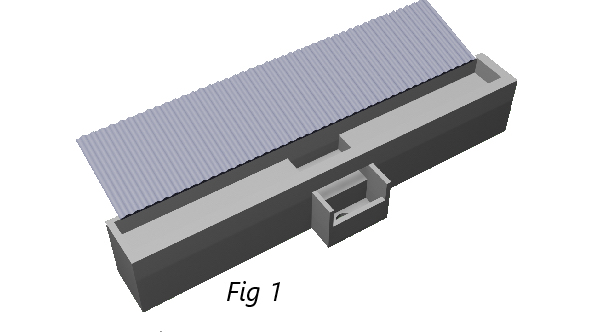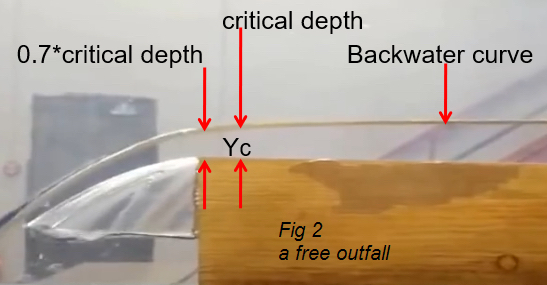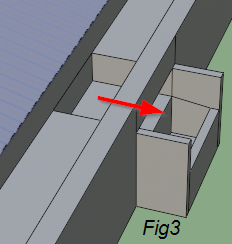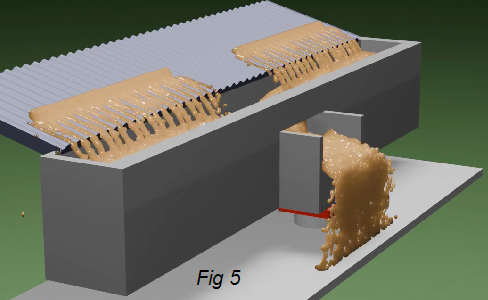Is It Possible to Have a Side Overflow Chute?
Can we use a side overflow chute? Not according to AS/NZS 3500.3. However, writes Ken Sutherland, there may be a way of combining the various graphs in the standard to produce a complying design.
This is a question that comes up a lot for some reason. Maybe the designer can’t fit a downpipe (DP) inside the building at this location.
Anyway, if we look at Figure 1 carefully, we can see that the box gutter on each side of the sump has a free outfall.
Therefore, these can be designed using graph H.1 in the Australian Standard AS/NZS 3500.3 for box gutters having a free discharge.
By the way, a free discharge means that the water flows over an edge into atmosphere, as in Figure 2. It doesn’t go through any slots, or orifices, or pipes or weirs, etc.
So, these two box gutters meet that criteria.
WORST CASE
The box gutter that has the greatest flow is the worst case, and we use this flow to design both the box gutters.
This makes roof framing and construction a bit easier.
Going back to Figure 1, if we extend the sump out through the parapet, it starts to look remarkably like a box gutter.
It has a flow coming in over the edges, and in this case it drains to a free outfall. See Figure 3.
And that free outfall in Figure 3 looks remarkedly like a box gutter draining to a rainwater head.
All these items can be designed using the Australian standard.
WILL IT WORK?
So, just for fun I did some computational fluid dynamics to check it out.
I used the maximum flow that can be designed using the graphs.
See Figure 4. (By the way, that’s orange juice, not water; water is too transparent for this demonstration.)
All dimensions in the model were calculated using the graphs in Australian standard AS/NZS 3500.3:2021.
As you can see in Figure 4, there is no overflowing, and the water depths agree with results of the standard.
But will the overflow from the RWH be sufficient? Judging from Figure 5 with a fully blocked DP, it would appear so.
As this is a controversial issue, I would appreciate any comments.
You can contact me via the ‘contact’ menu on the website.
Ken Sutherland CPEng, MIEAust has been a hydraulic consultant for over 30 years, and now offers many free design programs on roof-gutter-design.com.au
This article first appeared in Plumbing Connection, Issue #2, 2024.






